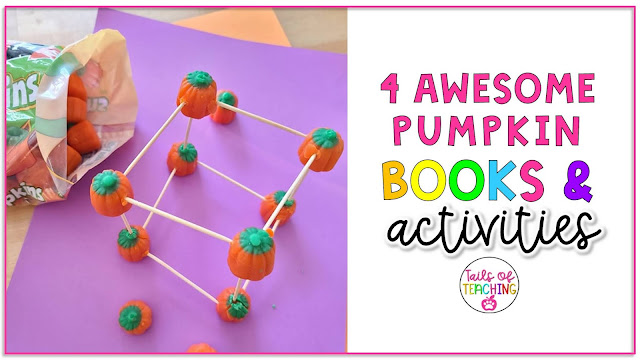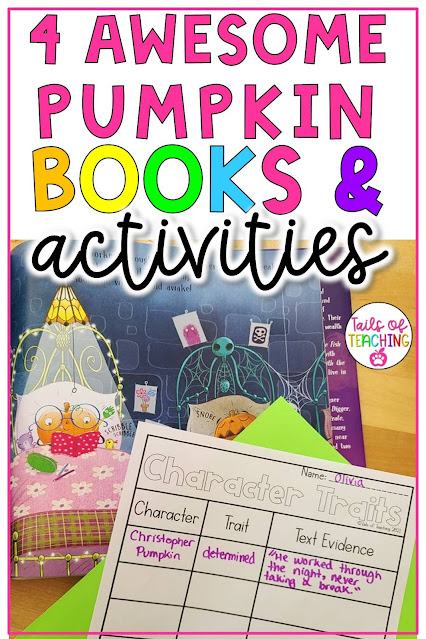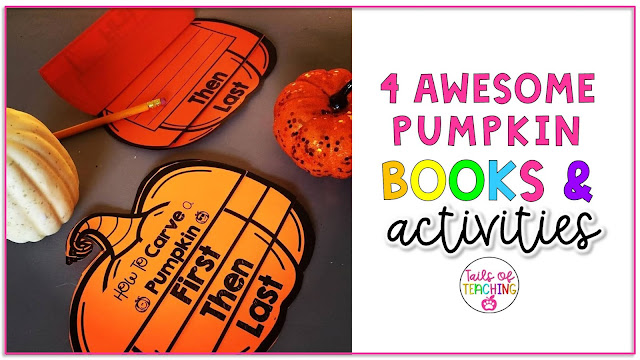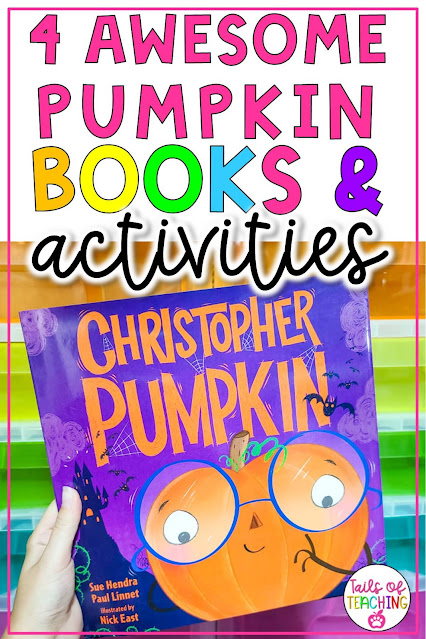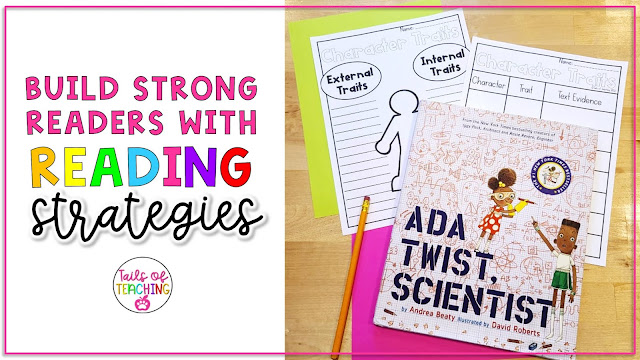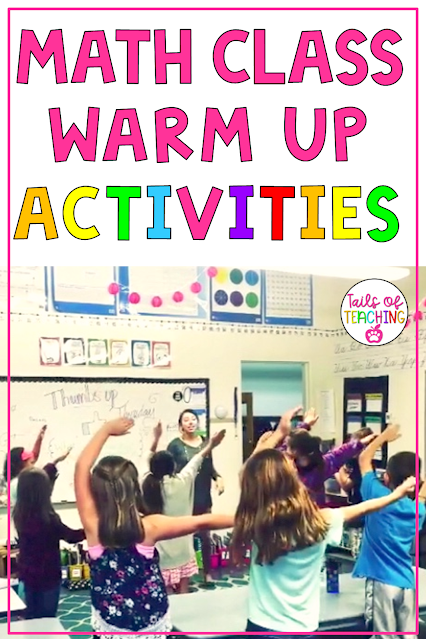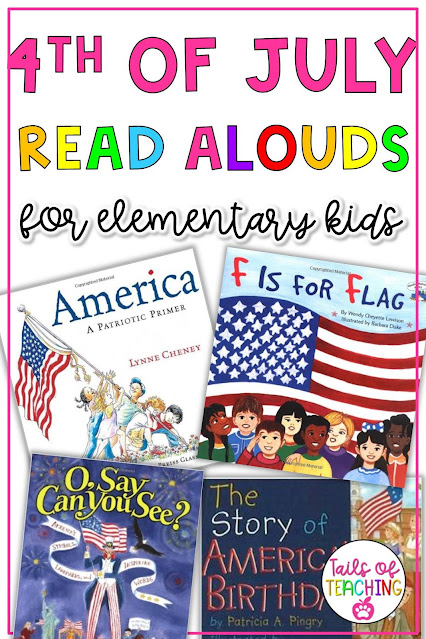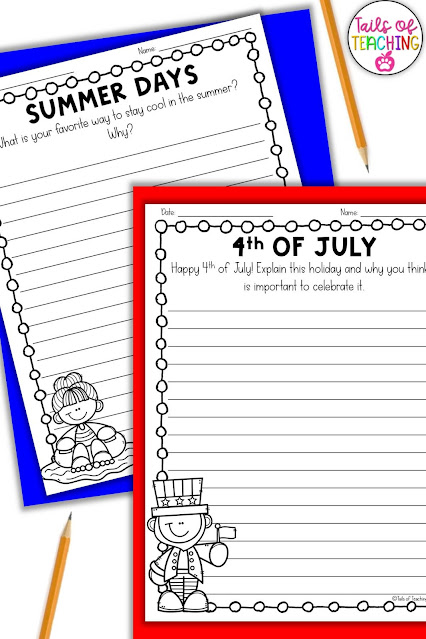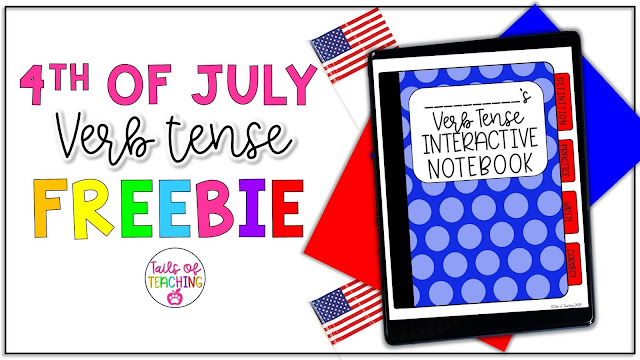
Have you ever played with blocks before? Have you used those
colorful shapes to build a little house or a soaring tower? Well if you have
constructed any building from blocks, you know that one thing is certain, a sturdy
foundation is key in your tower successfully standing tall and not crumbling to
the floor. Reading instruction is a lot like building a tower. If readers have
a strong foundation of reading strategies and skills to build from, they can
springboard their mastery and love of reading. However, when students don’t
have a sturdy foundation of reading strategies, that's when we see our
kiddos struggle and quickly turn into resistant and reluctant readers. Reading
strategies are crucial but how do we teach reading strategies? Which reading
strategies do our students need the most? Well, stay tuned teacher friend
because I’m going to share all of my favorite tips and strategies for teaching
a strong foundation of reading strategies and building a love of reading in
your kiddos that is made to last.
What are
Reading Strategies?
Reading strategies are just that, strategies and skills that
students can use to understand and grow in their mastery and craft as readers.
Let’s use this example, you are reading a story and the main character comes
inside soaking wet with a frown on their face. Using the clues the author gave
us, as the reader, we can piece together that our main character is most likely
unhappy because they got caught in the rain. We just used a reading strategy
called inferencing to understand the story and character better. This
understanding may not seem like a big deal, but as readers dive further into
understanding the characters in this story and more complex stories, this
reading strategy skill of inferencing will be crucial for deep thinking and
understanding of story characters. There are many other reading strategies like
the example above, but they all share one thing in common, they are essential
for our students to become strong, avid readers who understand the what and why
of the text they are reading.

How I
Teach Reading Strategies
So we have established that reading strategies are uber
important for our students to grow as readers, but how do we teach them? There
are many methods for teaching reading strategies to your students. Below are
the tools and practices that I use when teaching reading strategies to my
students.
Using
Video to Introduce Reading Strategies:
Ok I know you are probably making a face after reading that
heading, but hear me out. Today's students are complex thinkers and learners.
Not all are auditory learners and if I have an option to teach to one of their
other intelligences (visual/ technological) then I jump on it. I have found
that Pixar Shorts can be an incredibly powerful and HIGHLY engaging tool to use
when you are introducing reading strategies to your students. These are brief
animated videos that demonstrate one skill or lesson. These videos can be a
great place to start when teaching reading strategies to your students. You can
explore them HERE.
Using Anchor Charts to
Teach Reading Strategies:
Visuals are everything. When I introduce new reading strategies to
my students, I always have an anchor chart handy. I personally hate drawing
anchor charts, mine just never seem to come out right, so I print mine instead
and make my teacher life a little easier hallelujah! I have a reading
strategies skill anchor chart next to me when I introduce and teach the skill
to aid my students as a visual tool while they learn. I will refer to the
anchor chart in our lesson that follows the Pixar Short film, during our
reading of a mentor text, and after to really sink in those new skills. Finally, I
make sure my students have exact copies of my teaching anchor chart, which they
will glue into their reading strategies notebook. Here they house all of their
reading strategies anchor charts and tools so they can access them whenever
they need to be it during independent work time or at home for homework. Making
sure my students have access to the same tools I use in my lessons is a huge
game-changer in their ability to practice their reading strategies.

Using
Picture Books to Teach Reading Strategies:
I am a huge lover of picture books (if you follow me on Instagram
you already know this). I use picture books as my mentor texts when I first
introduce a reading strategy. Yes, even with fourth graders and older students,
picture books can pack a big punch! If you pick the right picture books, they
can offer a strong dose of exactly what you need in such a short amount of time
(something that chapter books, unfortunately, cannot do). After I have
introduced the reading strategy that will be focusing on, I ask my students to
be “reading detectives” and see if they can hunt down the reading strategies in
the story as we read. My students love playing this sort of game as we read
together and it helps to boost their engagement as we learn new reading
strategies together.
Practicing
Reading Strategies:
After I have taught my students a new reading strategy through
short videos, lessons, anchor charts, and mentor text examples, it is time for
them to practice the “you do” part of learning a new skill. I have my students
practice the new skill by being “reading detectives” in their own books. They
will look for the reading strategies inside of the book they are currently
reading during our independent reading time. To keep my teacher brain less
strained, I will assign them a reading strategies skill worksheet that can be
used universally across all of their texts. This is such a time saver for me! I
also love that the students will have consistency in the visuals of the skill I
am asking them to demonstrate. If in the following days or reading units I
want them to use their predicting skills, the worksheet will look the same for that
skill even though their text may be different. I have found that direct reading
strategies worksheets work far better for student accountability and
organization than doing, "stop and jot" sticky notes in their books. I love having
my students keep their worksheets inside of their reading strategies notebooks
(I used 1" 3 ring binders). This is because it provides an amazing visual for
my students when we conference and discuss their growth in a particular reading
strategy. We can simply flip back to the first time they practiced the skill
and see how much they have grown. My students truly love when we do things like
this.

Reading strategies are crucial for building a sturdy foundation
for your students to grow from and build a love of reading. I hope you learned
some helpful tips and strategies about how I teach reading strategies. If you
want to explore any of the reading strategies tools you saw in this post,
simply click HERE.

Click HERE to explore the full reading strategies bundle now!
Hey there 3rd and 4th grade teacher friends, this ones for you! I have a question to ask…
What if you didn’t have to waste endless hours hunting for engaging and rigorous resources? Resources that you can trust to create massive impact and constant light bulb moments with your students? What if you could regain those precious hours, nights, and weekends that you usually waste hunting for teaching tools? Well, your teacher wishes are about to be answered with the best membership for grade 3 and 4 teachers, The Elementary Teacher Toolkit! We are a membership that gives you back your precious time, reduces your teacher stress, and supports you as you grow and teach.
Want to see a FREE sample of what we’re all about? Click HERE to download a free sample kit of all the goodness that is waiting for you when you join us in The Elementary Teacher Toolkit!


